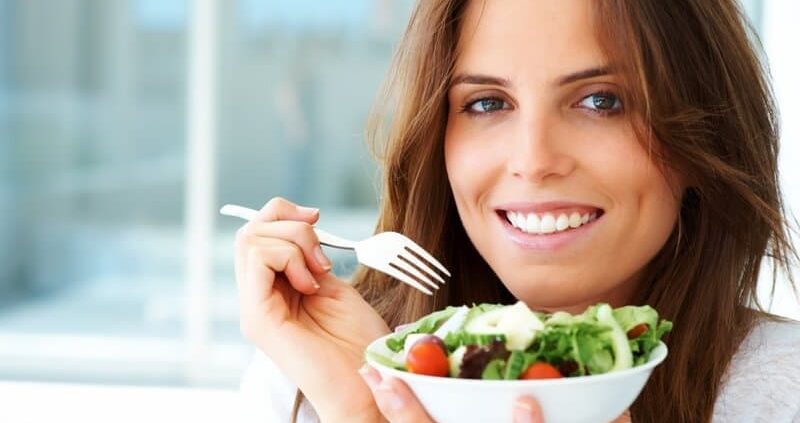The right diet and food for the dual-dosha Prakriti are difficult to find.
It is because the food that pacifies one may aggravate the other dosha. Vata which is cold requires hot meals and on the other hand, Pitta that is hot requires cool meals.
The art for the Vata-Pitta diet plan is to eat in such a way that none of the doshas are aggravated. There is no particular food that will give you the quality of both the doshas.
So, you have to listen to your body. This will help you to know which dosha is imbalanced and how to bring it to a balanced state. You can use the Dosha test application to determine this.
To further help you out, we have jotted down a list of food and a Vata-Pitta diet. You can eat them as they are good for both Vata and Pitta.
Table of Contents
Vata-Pitta Diet And Food
Down below are a combination of food items that are suitable for both the doshas.
Just keep in mind if one of the doshas is more prominent than the other one so you need to consider the qualities of the dosha that is more while preparing your meals.
Diet and food you include should be part of daily routine to manage Vata Pitta Dosha.
You should consider the below list when planning your Vata Pitta dosha diet. The food items below keep your digestion optimum and prevent gas, bloating and constipation.
Down below is a food list that will tell you which food to go for and which to avoid:
1. Cereals
Whole grains are the best cereals. Go for the natural organic cereals. You have to cook them before eating.
Cereals To Go For
- Cooked oats
- Bread (without yeast)
- White Rice (preferably basmati)
Cereals To Take In Small Amounts
- Barley
- Amarnath
- Millet
- Short-grain rice
- Brown rice
- Rye
Cereals To Completely Avoid
- Corn
- Buckwheat
2. Fruits
For this dual dosha, when it comes to fruits moderation is the key. Go for sweet and ripe fruits. They are light and easily digestible.
Fruits To Go For (In Moderation)
- Avocado
- Apricot
- Grapes
- Peaches
- Pomegranate
- Watermelon
- Pineapple
- Tangerine
- Apple
- Bananas
- Coconut
- Sweet oranges
- Watermelon
- Pineapple
- Cantaloupe
- Blueberries
- Figs
- Dates
- Cherries
- Lime
- Pear
- Mango
- Prunes
- Strawberries
- Raspberries
- Sweet Papaya
- Raisins
Fruits To Avoid
- Oranges
- Dry Fruits
- Any sour fruit
3. Vegetables
It is good for you to go for cooked vegetables over raw uncooked veggies. Well-cooked vegetable easy on your stomach and balance out Vata and Pitta well.
If you feel your digestion is good you can go for raw salads but, avoid them as far as you can.
Vegetables To Go For
- Cilantro
- Bottle gourd
- Okra
- Pumpkin
- Sweet potato
- Winter squash
- Zucchini
Vegetables To Go For In Small Amounts
- Potato
- Beet
- Asparagus
- Beansprout
- Celery
- Eggplant
- Cucumber
- Yellow, red green bell pepper
- Brussels sprout
- Seaweed
- Carrot
- Kale
- Lettuce
- Parsley
- Spinach
- Sour tomato
- Turnip
Vegetables To Avoid
- Cabbage
- Green bell pepper
- Hot pepper
- Radish
- Raw onion
- Chilies
4. Legumes
Most of the legumes tend to increase your Vata Dosha. So, you have to be very careful with the legumes.
Legumes have a cold nature so try to soak them overnight before cooking. Moreover, add oil and a few spices to balance out their cold nature.
Legume To Go For
- Moong Daal
Legume To Take In Small Amounts
- Black gram
- Navy beans
- Adzuki beans
- Pinto beans
- Black lentils
- Tofu
- Chickpeas
- Split peas
Legumes To Avoid
- Dried peas
- Soybeans
- fava
- kidney beans.
5. Nuts And Seeds
Nuts and seeds form a good option for both vata and pitta. But, prefer eating them after soaking it for a minimum of 8 hours.
They can form your snack food item as you can easily digest them. However, keep their amount in moderation overeating nuts can cause loose stools.
Nuts And Seeds To Go For
- Almonds
- Cashew nuts
- Pine nuts
- Tender coconut
- Sunflower seeds
- Brazil nuts
- Lotus seeds
- Pistachios
- Pecan
- Pumpkin seeds
Nuts To Avoid
- Peanuts
6. Oils
Healthy organic oils in generous amounts work well for vata and pitta both. This is must for your diet to keep your body calm and smooth.
Oil To Go For
- Clarified butter (ghee)
- Olive oil
- Avocado oil
- Coconut oil
- Sunflower oil
Oil To Go For In Small Amounts
- Almond oil
- Castor oil
- Flaxseed oil
- Soy oil
- Corn oil
Oils To Avoid
- Canola oil
- Peanut oil
- Mustard oil
- Safflower oil
- Margarine
7. Spices
You have to be careful with your spice choice. Most of the spices are very hot so be careful it may imbalance your Pitta. Always go for spices in small amounts but don’t avoid them completely from your diet.
Spices To Go For
- Cardamom
- Cilantro
- Caraway
- Catnip
- chamomile
- Coriander
- Fennel
- Rosemary
- cumin
- lemongrass
- saffron
- turmeric
- spearmint
Spices To Go For In Small Amounts
- Dill
- Basil
- Anise
- Fenugreek
- Fresh Ginger
- Nutmeg
- Poppy seeds
- Oregano
- Sage
- Thyme
- Black pepper
- Star anise
- Salt
- Poppy seeds
- Marjoram
- Basil
Spices To Avoid
- cayenne
- asafoetida (Hing)
- Dry ginger
- Horseradish
- Raw garlic
- Cloves
- hot mustards.
8. Drinks
All your drinks should be consumed at room temperature. Ice cold drink destroys the digestion so it is always best to avoid them.
Drinks To Go For
- licorice tea
- Chamomile tea
- coriander and mint tea
- Spiced tea
- Water
Drinks To Go For Small amounts
- Packed fruit juices
- Buttermilk
- naturally flavored soda
- green tea
Drinks To Avoid
- Coffee
- Alcohol
- Vegetable juices
- Balck tea
Suggested Meal Plan For Vata-Pitta Diet
It is difficult to figure out a meal plan for the dual dosha. But, to keep you at ease we are here with few suggested meals for the same. Scroll down to view them.
Vata Pitta Breakfast
A Vata-Pitta individual should never skip their breakfast. Your breakfast should not be too heavy and it should contain raw uncooked food or the leftovers from the previous day.
Go for alight nutritious fresh breakfast. Make sure not too many refined products like packaged butter, sauces, or bread for your breakfast.
A few breakfast options are as follows:
- Cereal with milk or milk substitutes like almond milk, coconut, milk
- Cereals cooked in plain water along with some fresh fruits
- Two medium-size idlis with coconut chutney
- A bowl of oats
- Oats pancake with a dash of honey
Vata Pitta Lunch
Your lunch should be the heaviest meal of the day. It should be nourishing, grounding, and stabilizing. It is the largest meal of the day and you should have it anytime between 12 pm to 2 pm.
A few good options for lunch are:
- A bowl of cooked rice along with cooked moong beans gravy
- One bowl Cooked vegetables with 2 rotis or tortillas or with multigrain bread
Pair your meal with a small amount of salad and soup, if you wish too. Always prepare a fresh soup don’t go for the ready to make soups.
Vata Pitta Dinner
Your dinner can be a small portion of your lunch. You should have your dinner by the maximum 7 pm. Your dinner should be at least 3 hours before your bedtime to allow its proper digestion.
If you feel hungry after having dinner you can go for a small glass of warm milk with some raisins.
A few good dinner options are:
- Half a bowl of rice with daal
- Cooked vegetables with 1 roti or tortilla
- A bowl of chicken or vegetable soup
- A moong daal pancake
Final Talk
The Vata-pitta food and diet plan mentioned in this article is a guide to help you to make the right choices for your imbalanced Vata Pitta Dosha.
You can anytime change the plan as per your body needs and requirement. The key is to listen to your body, this will make your food choices much easier in terms of what and when to it, and which foods to combine.
Additionally, your food items should be well-cooked and organic. Try not to go for the packaged items as they are filled with chemical preservatives which just harm your body in the long run.






